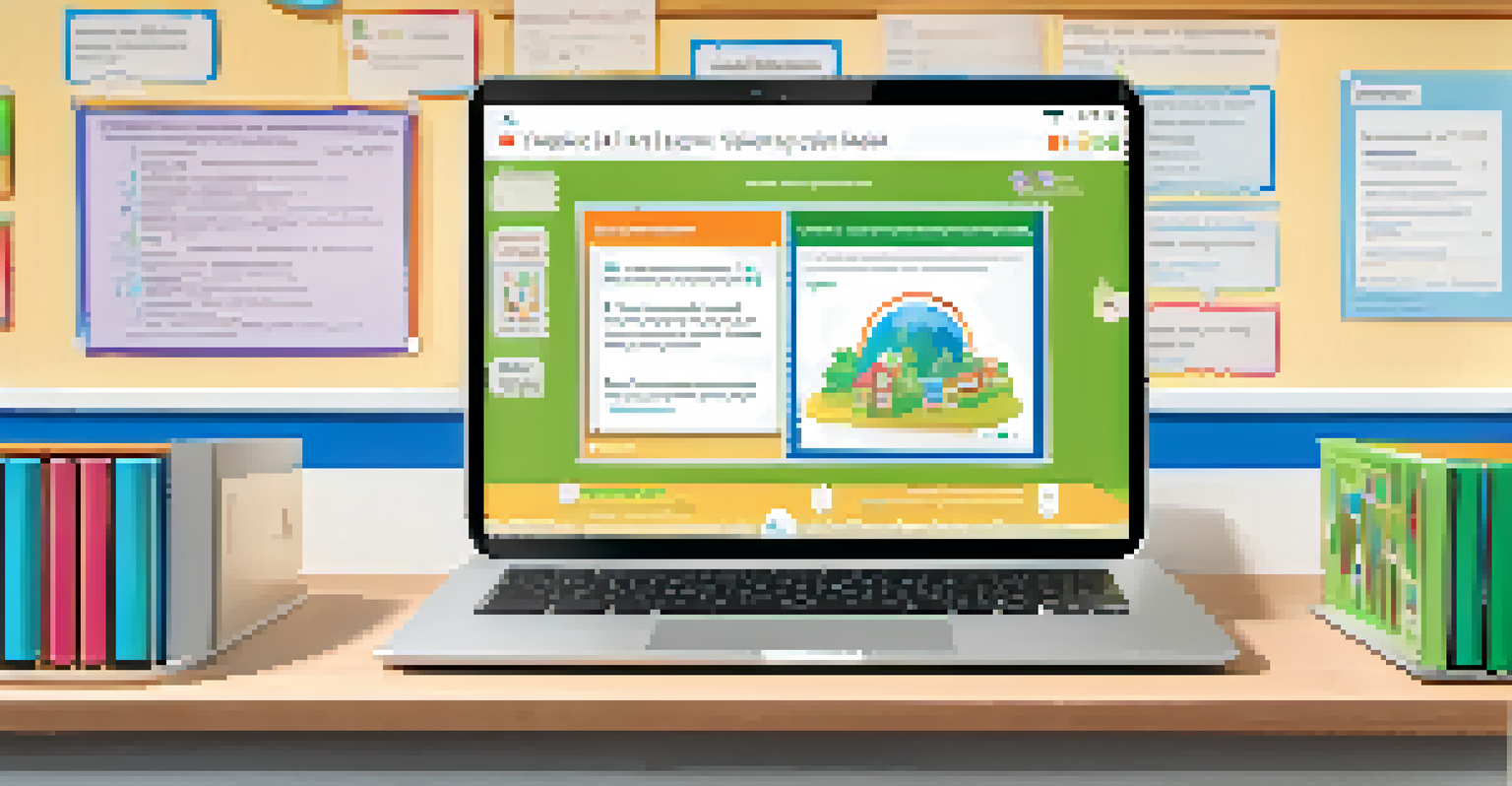The Future of AI Tutors: Personalized Support for Students

Understanding AI Tutors and Their Role in Education
AI tutors represent a significant shift in how education is delivered. They leverage advanced algorithms to provide personalized learning experiences tailored to each student’s needs. Imagine having a teacher available 24/7, ready to help with homework or explain complex concepts at your own pace.
Technology will not replace great teachers, but technology in the hands of great teachers can be transformational.
These digital mentors can assess a student's strengths and weaknesses, adapting their teaching methods accordingly. For instance, if a student struggles with math, an AI tutor can offer additional practice problems and explanations. This tailored approach helps bridge learning gaps that traditional classrooms might miss.
The role of AI tutors extends beyond just academic assistance; they can also foster a more engaging and interactive learning environment. By utilizing gamification techniques or interactive simulations, these tutors can make learning feel less like a chore and more like an adventure.
Personalization: The Heart of AI Tutoring
One of the standout features of AI tutors is their ability to personalize learning experiences. Unlike a one-size-fits-all classroom approach, AI can tailor lessons based on individual learning styles and preferences. For example, a visual learner might benefit from video explanations, while an auditory learner might prefer podcasts or discussions.

This personalized support can significantly boost student engagement and motivation. When learners receive content that resonates with their unique styles, they are more likely to stay focused and retain information. Think of it like having a personal trainer who knows exactly how to motivate you based on your fitness goals.
AI Tutors Personalize Learning
AI tutors adapt lessons to individual learning styles, boosting engagement and retention.
Moreover, AI tutors can continuously adapt to the student’s evolving needs over time. As students progress, the AI can introduce more complex topics when it senses they are ready, ensuring that learning remains challenging yet achievable.
Enhancing Accessibility in Education Through AI
AI tutors can play a pivotal role in making education more accessible to all students, regardless of their background. For instance, students in remote areas or those with disabilities can benefit from AI-driven educational tools that cater to their specific requirements. This opens up a world of opportunities that were previously limited by geographical or physical constraints.
The future of education is not about technology, it's about the people who use it.
Imagine a student who has difficulty attending traditional classes due to health issues. An AI tutor can provide them with the same quality of education from home, ensuring they don’t fall behind. This flexibility not only supports learning but also empowers students to take charge of their education.
Furthermore, AI can offer resources in multiple languages, helping non-native speakers overcome language barriers. By providing content in a familiar language, students can better grasp complex subjects, leading to improved academic performance.
The Role of Data in Shaping AI Tutors
Data plays a crucial role in the effectiveness of AI tutors. By collecting and analyzing data from student interactions, AI can identify patterns that inform its teaching strategies. This data-driven approach ensures that the AI tutor evolves and improves over time, much like how a coach refines their game plan based on player performance.
For example, if a student frequently struggles with specific math problems, the AI can recognize this trend and adjust the curriculum accordingly. This means targeted support when it’s needed most, rather than a generic review of all topics.
Accessibility in Education
AI tutors enhance educational access for students in remote areas or with disabilities.
However, it’s essential to handle this data responsibly to protect students’ privacy. Ensuring that data is used ethically and transparently builds trust between students, parents, and educational institutions.
Challenges and Limitations of AI Tutors
While the potential of AI tutors is immense, there are challenges to consider. For instance, not all students may respond positively to a digital learning environment. Some learners thrive in face-to-face interactions and might struggle without the emotional support that human teachers provide.
Moreover, the reliance on technology can create disparities among students. Those with limited access to devices or the internet may find themselves at a disadvantage, highlighting the need for equitable solutions in the push for AI integration in education.
Additionally, as AI tutors become more prevalent, questions about their effectiveness compared to traditional teaching methods arise. Ongoing research and feedback from students will be critical in determining how best to integrate AI into the educational landscape.
The Future: AI Tutors and Human Educators Together
The future of education likely lies in a harmonious blend of AI tutors and human educators. Rather than replacing teachers, AI can serve as a supportive tool that enhances their capabilities. Imagine a classroom where teachers can focus on fostering critical thinking and emotional intelligence, while AI handles personalized learning tasks.
In this collaborative environment, educators can leverage AI insights to tailor their teaching strategies, making lessons more relevant to their students. For instance, a teacher could use data from AI tutors to identify which concepts require more classroom time, ensuring that no student is left behind.
Collaboration with Human Educators
The future of education lies in blending AI support with the expertise of human teachers.
Ultimately, the goal should be to create an ecosystem where technology and human interaction coexist, enriching the learning experience for everyone involved.
Preparing for an AI-Driven Educational Landscape
As we move toward an AI-driven educational landscape, preparing students for this shift is essential. Educators and parents must foster digital literacy skills that enable students to navigate AI tools effectively. This includes understanding how to use AI responsibly and recognizing its limitations.
Schools should consider incorporating AI literacy into their curriculums, teaching students how AI works and how it can complement their learning. By demystifying AI, students can feel more empowered and less intimidated by technology, allowing them to make the most of these resources.

Additionally, ongoing training for educators will be crucial in helping them integrate AI into their teaching practices effectively. This ensures that teachers are not only users of technology but also advocates for its thoughtful application in the classroom.